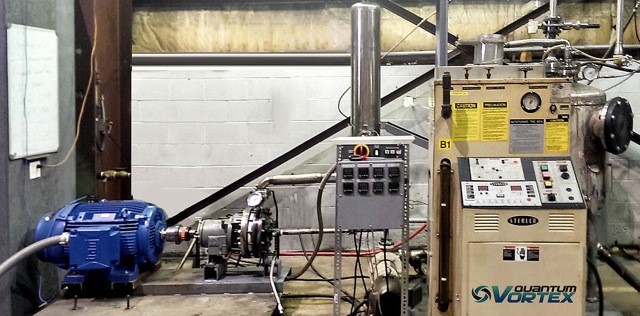October 2014, Vol. 241, No. 10
TechNotes
Quantum Vortex Completes 100-Bpd Crude Oil Upgrader

Pennsylvania technology company Quantum Vortex (QVI) has completed construction of its first 100-bpd crude oil upgrader, powered by QVI Hammer Technology™.
The company hopes its technology will address an important diluent problem: The diluent necessary to carry heavy crude adds a considerably to the cost of production and consumes significant pipeline capacity.
Although common to any place where heavy oil is produced – Mexico, Colombia, Peru, Ecuador and Venezuela, for example – the diluent problem is particularly severe in Canada where highly viscous bitumen produced from Alberta tar sands has to be converted to dilbit (a bitumen blend that contains 30-40% of diluent by volume) in order to meet pipeline maximum viscosity specification.
As a result, oil sands producers spend between $3-13 on diluent per barrel and are often forced to resort to an expensive (~$20/barrel) rail transportation to export dilbit to the United States.
The conventional solution to the diluent problem involves building multibillion-dollar upgrading facilities, such as those operated by Suncor, Cenovus and Syncrude, which are economical only at large scale and take years to deploy.
Hammer Technology offers a low-cost/low-risk solution to the upgrading problem by enabling zero-emissions 100-100,000 bpd upgrading facilities, which require less than $2,000/bpd in capital and cost less than $2/bbl to operate. Instead of relying on high temperature to promote energetic molecular collisions QVI Hammer Technology creates high-velocity fluid streams that break chemical bonds (thus cracking long-chain hydrocarbons) at near-ambient conditions.
Due to its reliance on extreme turbulence, the process is often confused with hydrodynamic cavitation, which is a hot topic of field upgrading research. In reality, however, the two processes are very different.
The technology differs from conventional thermal and catalytic cracking processes in that it lacks coking and produces virtually no incondensable gas or olefins. The unusual qualities of the process enable the construction of low-cost, skid-mounted upgraders that can be deployed at the wellhead. Larger facilities (up to 100,000 bpd) can be built by deploying banks of larger reactors.
Although the upgrading is not large by industry standards (1-2 degrees API improvement and 50-85% viscosity reduction – it allows eliminating up to 50% diluent while creating no emissions or product loss.
Because typical dilbit and heavy oil blends carry one-third to one-half of diluent by volume, 50% diluent reduction allows for dramatic decrease in transportation costs by requiring fewer trucks and fewer rail cars to transport the same amount of bitumen.
At the same time, more bitumen can be transported through pipelines, resulting in the effective pipeline capacity increase. The latter can eliminate the need for using rail altogether since in a typical oil sands, a producer transports 80-90% of its dilbit by pipeline and only 10-20% by rail.
The technology lacks emissions, which should make the deployment and permitting of the upgrading facilities hassle-free, and relies on simple hardware.





Comments